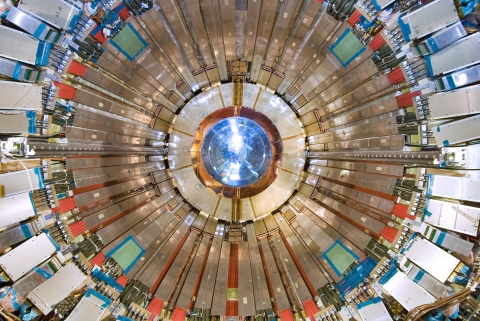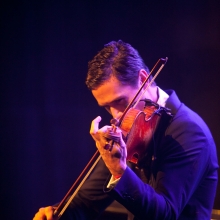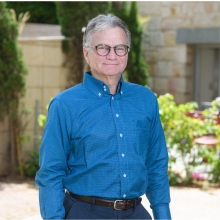Particle detective
Dr. Noam Tal Hod is developing the next generation of particle detectors
New scientists

In a quest to identify some of nature’s most elusive building blocks, Dr. Noam Tal Hod is developing new generations of particle detectors.
Dr. Tal Hod, who recently joined the Department of Particle Physics and Astrophysics at the Weizmann Institute, is searching for answers about the existence of dark matter, the makeup of matter versus antimatter, the quantum nature of gravity, and whether there is evidence of a realm of physics yet unexplained by the so-called Standard Model of particle physics. In pursuit of these unknowns, he has been an active contributor and leader of a number of research teams at CERN (the European Organization for Nuclear Research) in Geneva, working on the ATLAS particle detectors at the heart of CERN’s Large Hadron Collider (LHC), the world’s largest and most powerful particle accelerator.
On a quest to unify gravity with quantum mechanics, Dr. Tal Hod and a team of scientists at CERN are looking for the graviton, a hypothetical massive particle predicted in a number of quantum theories. Discovery of the graviton could provide an essential link between Einstein’s general relativity and the Standard Model.

The large hadron collider at CERN
“Gravity can not yet be explained with the Standard Model,” Dr. Tal Hod says. “And gravity is a fundamental force that we feel in nature. The existence of such new particles, heavier than what we could reach until today, will essentially validate that there is something beyond what we know today, beyond our current understanding of the universe.”
Beyond this work, Dr Tal Hod is also investigating basic physics in the presence of strong fields. According to the basic quantum theories, which are at the heart of the Standard Model, empty space is filled with pairs of virtual particles that would exist except for the fact that they cancel each other out. However, scientists believe that it should be possible to break these spontaneous virtual pairs apart if one could generate a strong enough electrical field. An American physicist, Julian Schwinger (1918-1994), calculated the value of the field, called the “Schwinger limit,” that would be needed to break this virtual matter apart, making it visible in the “real world”. Dr. Tal Hod is part of a small international team that recently came together to try to go beyond the Schwinger limit. Their approach is to collide high-intensity laser pulses with high-energy electron beams to attain the level of electric field strength and stimulate an environment similar to the one needed to break apart spontaneous pairs of virtually connected particles. Dr. Tal Hod is developing a new generation of silicon-based particle detectors to track each half of these broken pairs of particles for the new experiment.
Dr. Tal Hod is a co-coordinator of CERN’s Small-Strip Thin Gap Chambers (sTGC) project, within the upgrade program of the ATLAS detector. ATLAS is one of four major ongoing experiments at the LHC. In his new lab, Dr. Tal Hod will expand existing detector development efforts and integrate modern solid-state based technologies.
“When you search for new things, you have to be open minded,” Dr. Tal Hod says. “New physics, or new ideas within “old” fundamental physics can surprise you and come at you in a very weird way.”
Bio
Raised in the southern Israeli community of Bitzaron, Dr. Noam Tal Hod completed his BSc and MSc in physics at Tel Aviv University in 2006 and 2007, and completed his PhD there in experimental high-energy physics in 2012. From 2012-2015, he conducted postdoctoral research at the Dutch National Institute for Subatomic Particles, and did a second postdoctoral position at TRIUMF (Canada’s particle accelerator center) from 2016-2018. During both of these fellowships, he was based primarily at CERN, working on the ATLAS particle detector experiment at the Large Hadron Collider there.
Dr. Tal Hod is supported by the Benoziyo Endowment Fund for the Advancement of Science. He is the incumbent of the Anna and Maurice Boukstein Career Development Chair.








